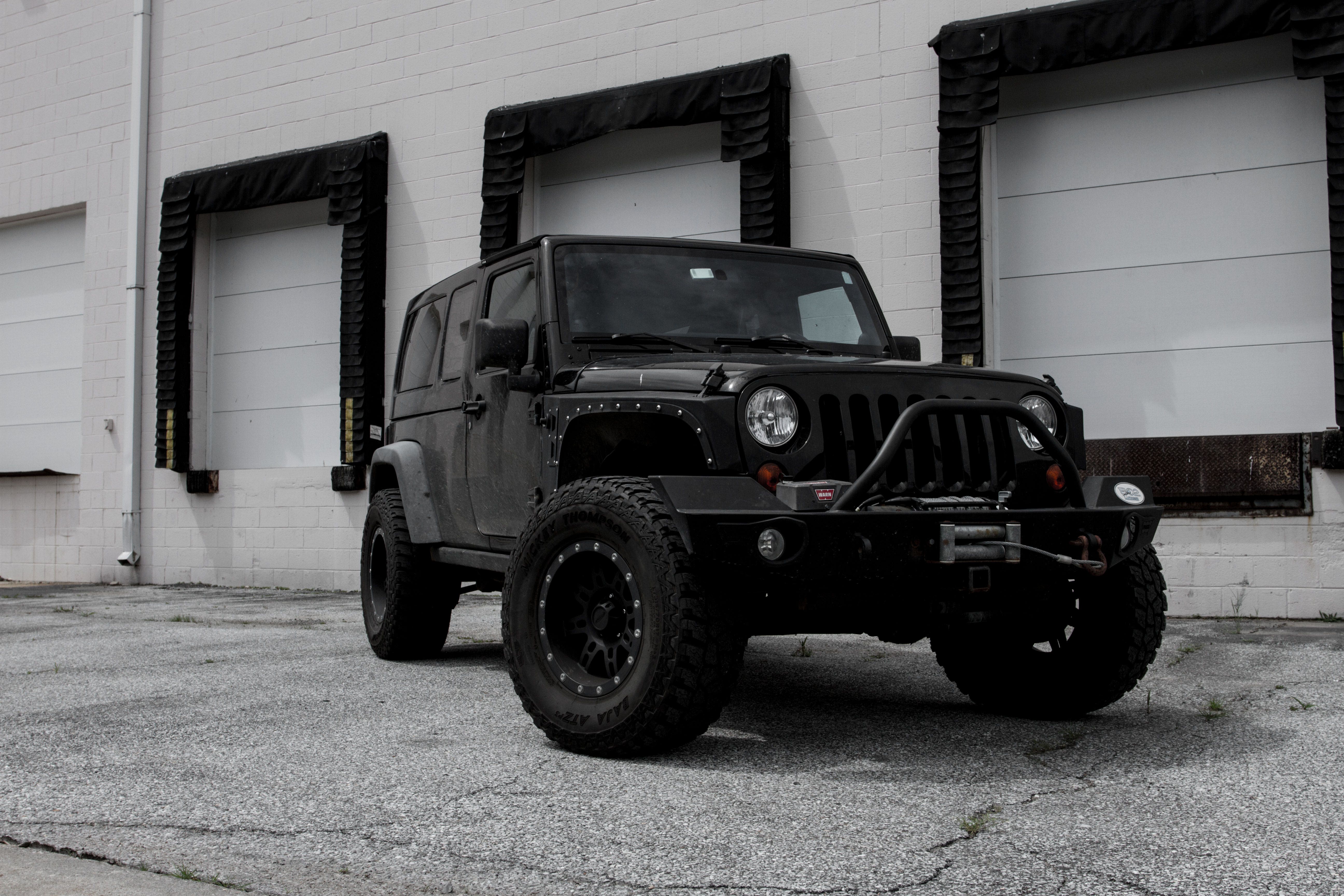
Off-Road to Recovery - Coolant Filter Kit R&D, Part 1: Start to Finish
This 2012-2018 Jeep Wrangler JK Coolant Filter Kit is now available! Click here to check it out!
For an automotive enthusiast, caring for your vehicle is tantamount to caring for yourself. An enthusiast's vehicle is part of the family and it's treated as such. When that vehicle happens to be a Jeep Wrangler, maintenance and modification can become nearly ritualistic. Check tire pressures, coolant level, and engine oil. Hit the trail, break something, upgrade the broken part so that it doesn't break again. Rinse, and repeat. From the outside, it looks like a constant battle of man against machine, but the enthusiast knows that it's more like a conversation among friends. You tell your Jeep what you want to do, it does it and then tells you what it needs in return.
But not every Wrangler/enthusiast relationship is so amicable. For many 2012-2018 JK Wrangler owners with the 3.6L Pentastar engine, that relationship is contaminated from the beginning. Literally.
If you own a 2012-2018 JK Wrangler 3.6L, you probably have an idea of what I'm alluding to, but if not, I'll explain. Over the past six years, owners of 2012-2018 3.6L JKs have been experiencing issues with clogged cooling systems. Most often these issues present themselves as cold air coming from the cabin heating system. A lack of cabin heating and defrosting is dangerous, especially in cold climates, but the issues don't stop there. Anything touched by the coolant is susceptible to clogging and subsequent failure. The radiator, heater core, oil cooler, and water pump are all vulnerable. The cause of all these issues? According to a recently filed lawsuit, some of the casting sand used to mold the Pentastar is not removed from the engine before assembly. That casting sand eventually works its way loose and begins traveling around the cooling system, wreaking havoc along the way.
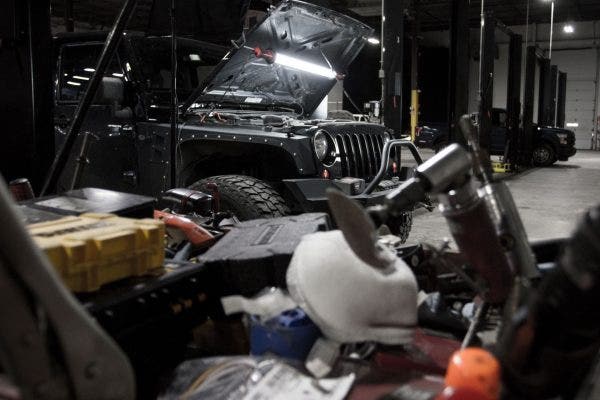
If all of this sounds like a problem for your warranty to cover, you'll be severely disappointed to hear that may not be the case. In that same lawsuit, owners state that FCA (Fiat Chrysler Automobiles, who owns the Jeep brand) often refuses to cover repairs under warranty. A few have been able to reduce their bill, but many end up paying thousands to overhaul their cooling system. Even worse, a coolant flush or replacing the affected components doesn't guarantee the issues won't return, as more casting sand makes its way into the coolant. The problem is so persistent that some owners have gone so far as to cut holes in their dash to make replacing the heater core easier.
Now that I've thoroughly depressed any new JK owners, here's the good news: Mishimoto has been working on a solution to help your 3.6L Pentastar fend off that pesky casting sand and any other particulate that might end up in the cooling system. We've created coolant filter kits for many applications before, but few have had quite the results that this kit has. While the aluminum block and heads of the 3.6L Pentastar can corrode if not cared for, our main goal for our 2012-2018 JK Wrangler coolant filter kit was to pull as much casting sand out of the coolant as possible.
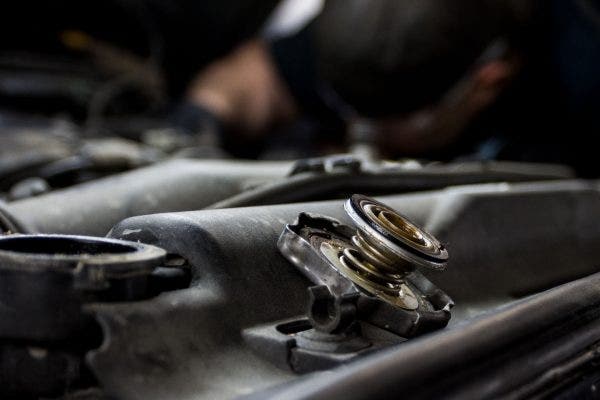
Before we could begin development, we first needed a JK to test on. We were fortunate enough to know just the right person. The owner of our volunteer JK has had his Jeep in to the dealership several times to fix the common complaint of cold air from the heating system, only to be left cold a short time later. It was a safe bet that there was casting sand in his cooling system, so there was no better vehicle for testing our coolant filter kit.
Evidence of casting sand in the coolant could be seen as soon as we pulled the radiator cap off. Our Director of Innovation, Eric, found a gritty residue coated the sealing surfaces of the rad cap and the inside of the radiator fill neck. To further drive the point home, the bottom of the coolant overflow tank looked like a 4th-grader's muddy diorama of some alien ocean. A not-so-healthy layer of sludge covered the bottom of the tank. Spurred on by these discoveries, Eric grabbed our 6.0L Powerstroke coolant filter bracket and an angle grinder to make a prototype bracket.
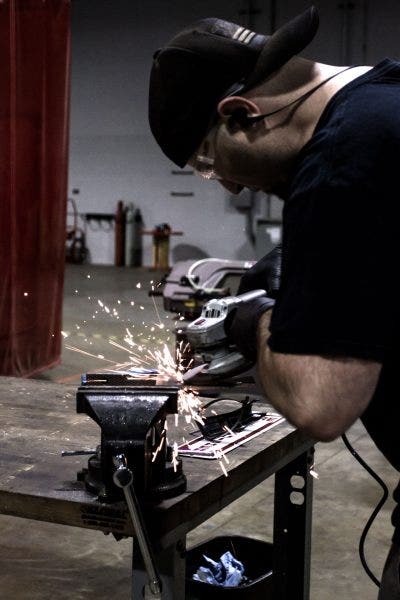
It makes sense that the most commonly reported failure in JKs with sand in the coolant seems to be the heater core. The small passages in the heater core make great meeting places for sand particles from all over the engine, and the lack of heat caused by a clogged heater core is very noticeable. In hopes of saving JK heater cores across the country, Eric targeted the coolant line going from the cylinder head into the heater core. Instead of completely rerouting flow from the head and into our cooler, the inlet and outlet lines for the filter are tied into the heater core inlet. That way, if the filter becomes clogged, coolant can bypass the filter and continue cooling the engine. With the filter open, the coolant will follow the path of least resistance through the filter before entering the heater core.
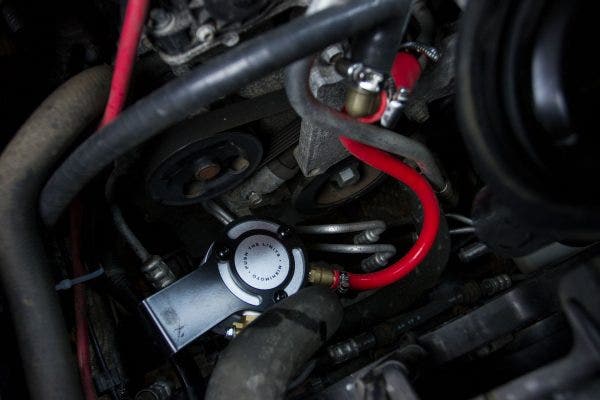
With the bracket cut down to size and the lines plumbed in, Eric could install the filter onto our volunteer JK. To make life for our engineer a little easier down the line, Eric chose to mount the filter in an area low enough to let gravity push sediment into it and high enough that it was safe from any off-road obstacles. A spot on the passenger-side frame rail fit the bill. Once installed, we sent the JK back to its owner for a 1,000-mile test drive. Little did we expect what came next.
Soon after its maiden voyage into the world, our JK coolant filter kit was back in our shop. Due to a tight schedule, the Jeep had only done about 800 miles of our typical 1,000-mile test. Nonetheless, we began disassembling the coolant filter kit to see what our 27-micron Wix® filter had caught. Just unscrewing the filter from the base told us almost everything we needed to know, and all our reactions were the same, "Coolant isn't supposed to look like that."
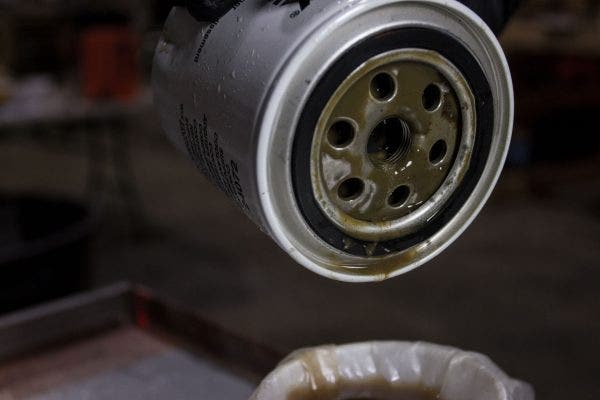
Eric poured the contents of the filter into several plastic cups lined with coffee filters so that we could see exactly what was in there. With each pour, the coolant became darker and more granular. It was like watching a seafood eating contest, but in reverse. Horrifying, yet mesmerizing. "How could that have possibly been in the engine?" we all thought. But we knew that wasn't the end.
For the final show, Eric rifled through his tools and pulled out a filter cutter. After removing the top of the filter and pulling out the filter cartridge, we could see the full extent of the JKs sand issue. Thinking back on this moment reminds me of the time my wife decided to buy and cook a cheap, whole lobster from the grocery store. If you've ever seen the inside of a cheap, poorly cooked lobster, you know what I'm talking about. If you have no idea what I'm talking about, take a look below and thank me later for steering you away from that tempting $6.00 lobster dinner.
As if we needed any more convincing that there is an issue with sand in the 3.6L Pentastar engine, I decided to empty one of the cups into a beaker and let it settle out for a couple days. After seeing what had been captured in the filter cartridge, the results were not surprising.
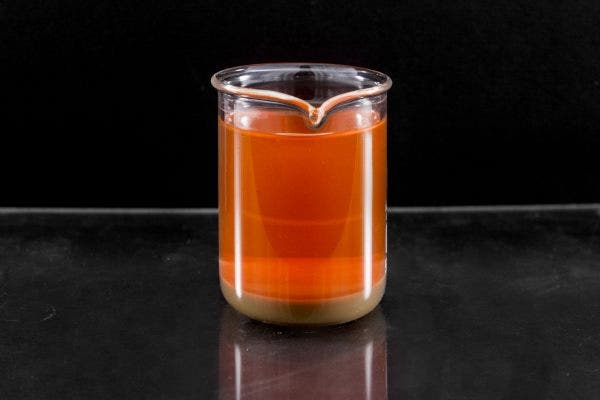
Our proof of concept was a success; all that was left was to refine the design and send it into production. Eric turned the project over to one of our engineers, Ye, to put the final Mishimoto touches on the bracket and lines and give it one more test-fit. Ye started by using our 3D scanner to create a digital model of the bracket that Eric molded earlier.
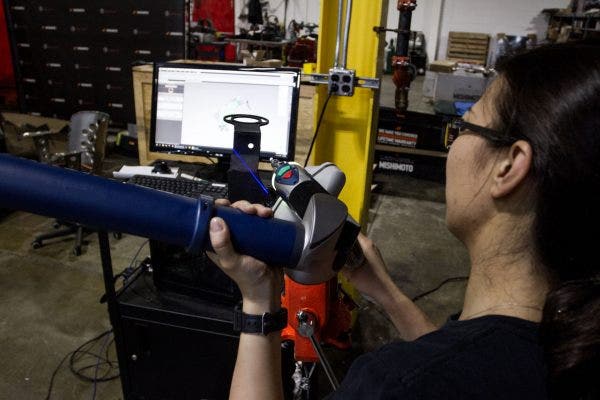
With the 3D model rendered, Ye made a few small changes to clean up the design and then sent it over to our fabricator to cut out of 4mm steel and bend into a production-quality bracket. A few coats of paint later and we had a bracket that could be used for one last test fit. Making the hoses was just a matter of combining all the fittings and hoses Eric made into one seamless silicone hose. The filter head, Wix® 27-micron filter, and ball valves are the same that we use for our Ford Powerstroke and Nissan Titan XD kits. As all the components came together, our 2012-2018 Jeep Wrangler JK coolant filter kit was complete.
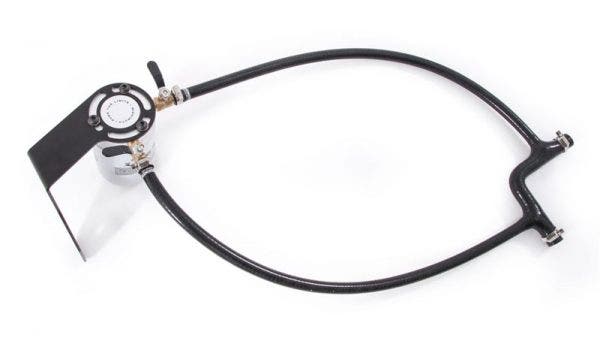
While this coolant filter kit won't reverse any damage that's already been done, our testing made clear that it's a big step in the right direction. Your 2012-2018 JK could be suffering from a sickness in its cooling system, and you may not know until it's too late. But now is your chance to get on the road to recovery and away from the shop.
Our 2012-2018 Jeep Wrangler JK 3.6L coolant filter kit is on discounted pre-sale right now. So, check it out on our website and, as always, feel free to let us know what you think.
Thanks for reading!
-Steve






